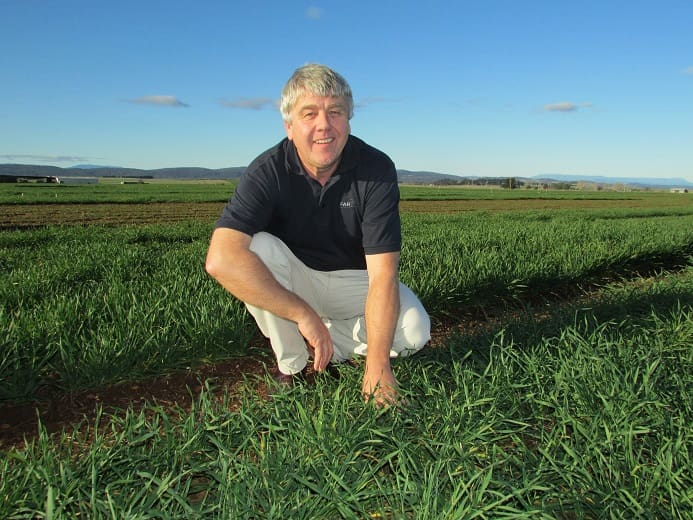
FAR Australia (Field Applied Research Australia) managing director, Nick Poole, says a second fungicide spray may be a profitable option for controlling diseases in barley this season.
WET conditions throughout Australia’s southern cropping regions have put growers on alert for the heightened risk of fungal diseases in barley and the potential for a second fungicide application to be a profitable option in such a high-yield-potential year.
The wetter-than-average conditions are not only being experienced in the recognised high rainfall zone (HRZ) which covers southern Western Australia, the tips of the Eyre and Yorke Peninsulas and through south east South Australia into southern Victoria and Tasmania.
This year a lot of the medium rainfall areas through the traditional grain belt are experiencing wetter conditions too.
FAR Australia (Field Applied Research Australia) managing director, Nick Poole, said that meant growers across a wide expanse of the southern farming regions needed to focus on managing disease risk this season.
“There will be a lot of cropping farmers who are experiencing it much wetter than normal and perhaps haven’t been able to get on their paddocks to spray their crops because, ironically, the seasons that favour high disease pressure tend not to favour the ability to spray them in a timely fashion,” he said.
“The other aspect is that in the seasons where we have higher spring rainfall and it doesn’t waterlog the crops it effectively increases the yield potential. So, the seasons where good disease management is essential can very often combine with the kind of conditions that favour higher yield potential.”
Mr Poole said with conditions favouring high yield potential in barley this might well be the season where a second fungicide application paid dividends.
“We have been alerting growers who traditionally spray at the start of stem elongation that, if the wetter conditions persist in the three to four weeks following that spray, this could well be the season that a second fungicide applied at the flag leaf to awn tip stage could show the benefit of that kind of input to protect the increased yield potential,” he said.
“The reason for that is that when the first spray goes on at the start of stem elongation the most important leaf in barley has not emerged in the crop. So, when you get to the flag leaf and awn tip stage, the most important leaf is guaranteed to be emerged and at the top of the canopy.
“In barley, it is not actually the flag leaf itself, which is quite small, but the leaf that sits underneath that leaf that we refer to as flag-minus-one.
“Last year, from the second fungicide when the conditions remained wet between the first and second spray, we found you get very good green-leaf retention later during grain fill. By keeping the crop greener for longer, that’s where the yield benefit comes from.”
Mr Poole said the main diseases likely to flare in barley under the wet conditions were either spot form of net blotch or net form of net blotch, and scald.
He said growers should be aware that there were instances of the net blotch pathogen starting to show signs of resistance, or resistance sensitivity, to some of the commonly-used fungicides.
“We are asking growers to consult with their advisers if they are in a region where these pathogens have been found,” he said.
Grain Central: Get our free cropping news straight to your inbox – Click here

HAVE YOUR SAY